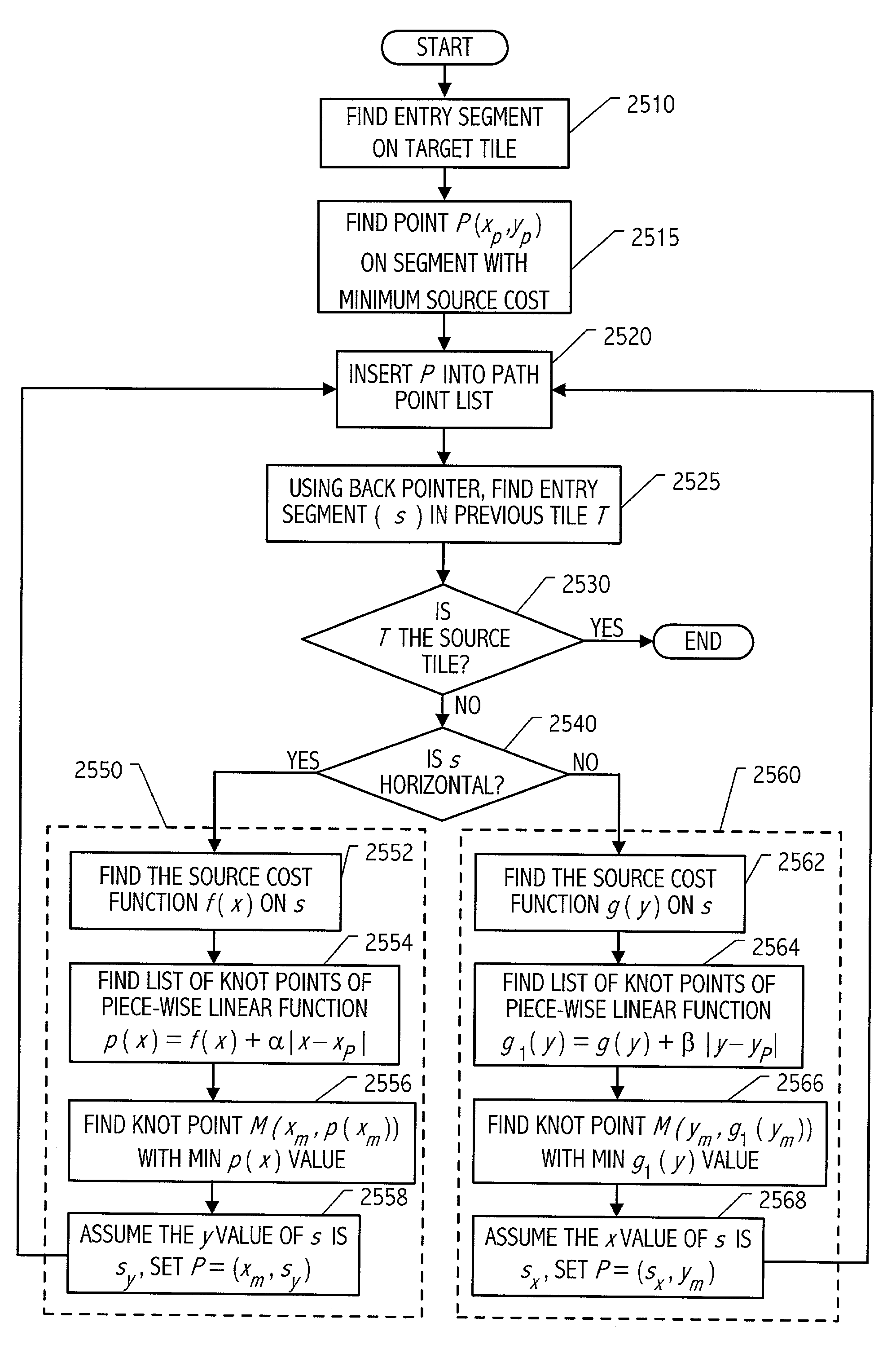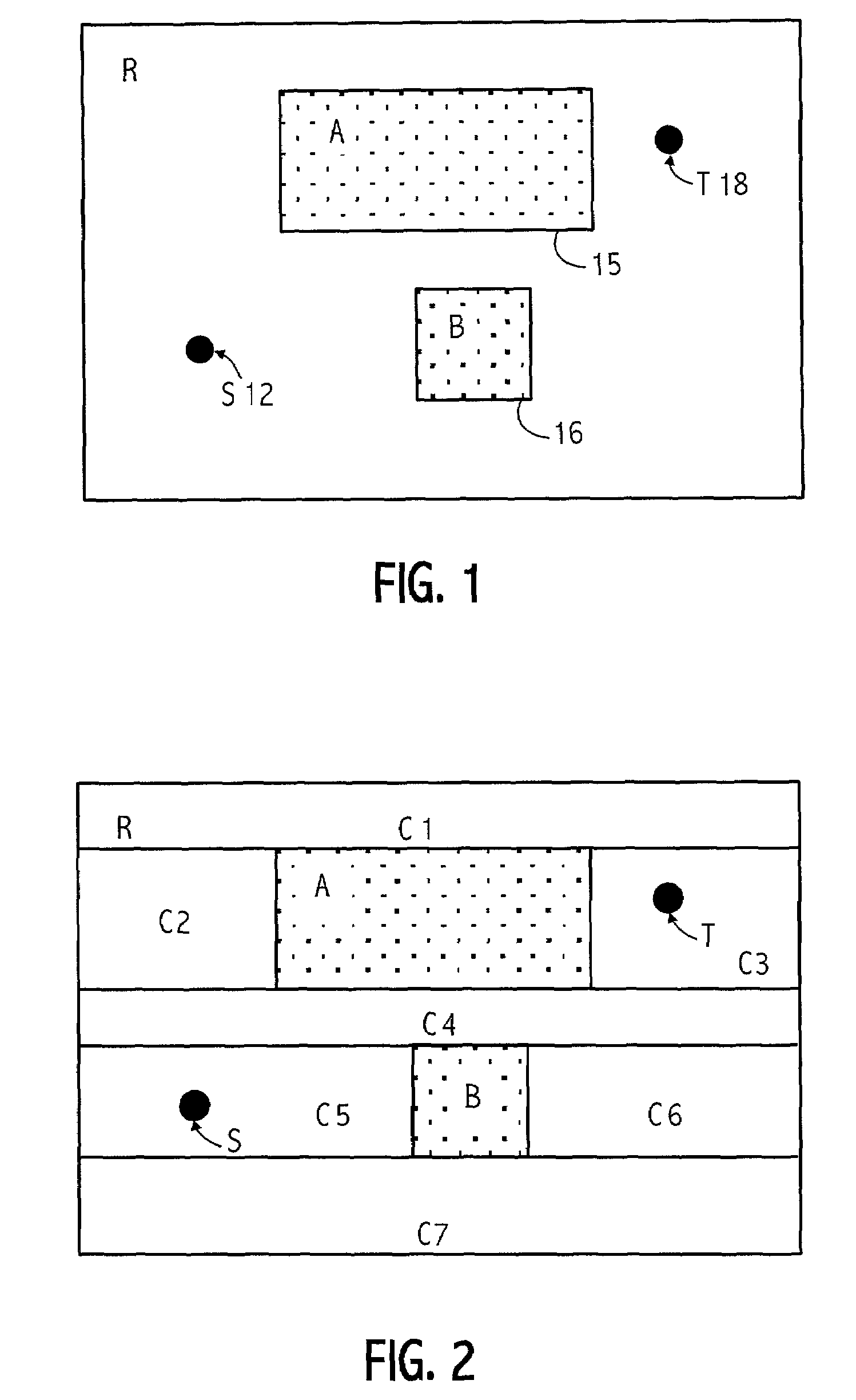Short path search using tiles and piecewise linear cost propagation
a cost propagation and short path technology, applied in the field of path search techniques, can solve the problems of failure to find a path, long computational time, failure to achieve, etc., and achieve the effect of facilitating the propagation of cost functions and the finding of shortest paths
- Summary
- Abstract
- Description
- Claims
- Application Information
AI Technical Summary
Benefits of technology
Problems solved by technology
Method used
Image
Examples
Embodiment Construction
)
[0045]The following discussion is intended to provide a detailed description of at least one example of the invention and should not be taken to be limiting of the invention itself. Rather, any number of variations may fall within the scope of the invention which is properly defined in the claims following this description.
[0046]FIG. 1 shows an example of a routing area 10 including obstacles 15 and 16 (sometimes designated “A” and “B,” respectively). In the embodiment shown, the goal is to find a path from source 12 (sometimes designated “S”) through the clear space of routing area 10 around obstacles 15 and 16 to target 18 (sometimes designated “T”). As used herein, the source and target are locations or end points between which a path is desired and are distinguished by an arbitrary decision to start searching for the target end point starting at the source end point. Also, during much of the following discussion, the source and target are treated as points. However, it will be ...
PUM
 Login to View More
Login to View More Abstract
Description
Claims
Application Information
 Login to View More
Login to View More - R&D
- Intellectual Property
- Life Sciences
- Materials
- Tech Scout
- Unparalleled Data Quality
- Higher Quality Content
- 60% Fewer Hallucinations
Browse by: Latest US Patents, China's latest patents, Technical Efficacy Thesaurus, Application Domain, Technology Topic, Popular Technical Reports.
© 2025 PatSnap. All rights reserved.Legal|Privacy policy|Modern Slavery Act Transparency Statement|Sitemap|About US| Contact US: help@patsnap.com



